Chrysler 2011 Annual Report Download - page 229
Download and view the complete annual report
Please find page 229 of the 2011 Chrysler annual report below. You can navigate through the pages in the report by either clicking on the pages listed below, or by using the keyword search tool below to find specific information within the annual report.-
 1
1 -
 2
2 -
 3
3 -
 4
4 -
 5
5 -
 6
6 -
 7
7 -
 8
8 -
 9
9 -
 10
10 -
 11
11 -
 12
12 -
 13
13 -
 14
14 -
 15
15 -
 16
16 -
 17
17 -
 18
18 -
 19
19 -
 20
20 -
 21
21 -
 22
22 -
 23
23 -
 24
24 -
 25
25 -
 26
26 -
 27
27 -
 28
28 -
 29
29 -
 30
30 -
 31
31 -
 32
32 -
 33
33 -
 34
34 -
 35
35 -
 36
36 -
 37
37 -
 38
38 -
 39
39 -
 40
40 -
 41
41 -
 42
42 -
 43
43 -
 44
44 -
 45
45 -
 46
46 -
 47
47 -
 48
48 -
 49
49 -
 50
50 -
 51
51 -
 52
52 -
 53
53 -
 54
54 -
 55
55 -
 56
56 -
 57
57 -
 58
58 -
 59
59 -
 60
60 -
 61
61 -
 62
62 -
 63
63 -
 64
64 -
 65
65 -
 66
66 -
 67
67 -
 68
68 -
 69
69 -
 70
70 -
 71
71 -
 72
72 -
 73
73 -
 74
74 -
 75
75 -
 76
76 -
 77
77 -
 78
78 -
 79
79 -
 80
80 -
 81
81 -
 82
82 -
 83
83 -
 84
84 -
 85
85 -
 86
86 -
 87
87 -
 88
88 -
 89
89 -
 90
90 -
 91
91 -
 92
92 -
 93
93 -
 94
94 -
 95
95 -
 96
96 -
 97
97 -
 98
98 -
 99
99 -
 100
100 -
 101
101 -
 102
102 -
 103
103 -
 104
104 -
 105
105 -
 106
106 -
 107
107 -
 108
108 -
 109
109 -
 110
110 -
 111
111 -
 112
112 -
 113
113 -
 114
114 -
 115
115 -
 116
116 -
 117
117 -
 118
118 -
 119
119 -
 120
120 -
 121
121 -
 122
122 -
 123
123 -
 124
124 -
 125
125 -
 126
126 -
 127
127 -
 128
128 -
 129
129 -
 130
130 -
 131
131 -
 132
132 -
 133
133 -
 134
134 -
 135
135 -
 136
136 -
 137
137 -
 138
138 -
 139
139 -
 140
140 -
 141
141 -
 142
142 -
 143
143 -
 144
144 -
 145
145 -
 146
146 -
 147
147 -
 148
148 -
 149
149 -
 150
150 -
 151
151 -
 152
152 -
 153
153 -
 154
154 -
 155
155 -
 156
156 -
 157
157 -
 158
158 -
 159
159 -
 160
160 -
 161
161 -
 162
162 -
 163
163 -
 164
164 -
 165
165 -
 166
166 -
 167
167 -
 168
168 -
 169
169 -
 170
170 -
 171
171 -
 172
172 -
 173
173 -
 174
174 -
 175
175 -
 176
176 -
 177
177 -
 178
178 -
 179
179 -
 180
180 -
 181
181 -
 182
182 -
 183
183 -
 184
184 -
 185
185 -
 186
186 -
 187
187 -
 188
188 -
 189
189 -
 190
190 -
 191
191 -
 192
192 -
 193
193 -
 194
194 -
 195
195 -
 196
196 -
 197
197 -
 198
198 -
 199
199 -
 200
200 -
 201
201 -
 202
202 -
 203
203 -
 204
204 -
 205
205 -
 206
206 -
 207
207 -
 208
208 -
 209
209 -
 210
210 -
 211
211 -
 212
212 -
 213
213 -
 214
214 -
 215
215 -
 216
216 -
 217
217 -
 218
218 -
 219
219 -
 220
220 -
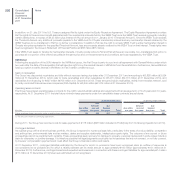 221
221 -
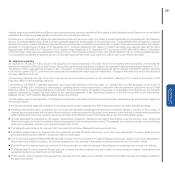 222
222 -
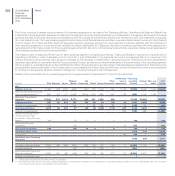 223
223 -
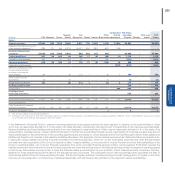 224
224 -
 225
225 -
 226
226 -
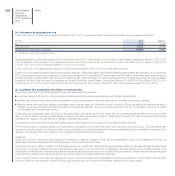 227
227 -
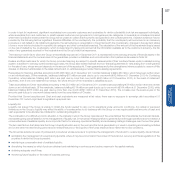 228
228 -
 229
229 -
 230
230 -
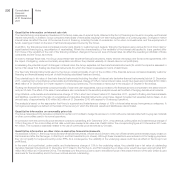 231
231 -
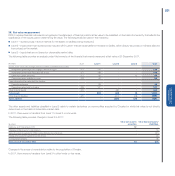 232
232 -
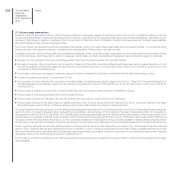 233
233 -
 234
234 -
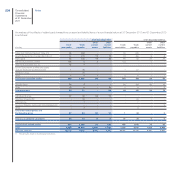 235
235 -
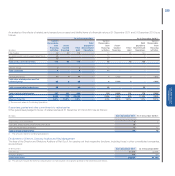 236
236 -
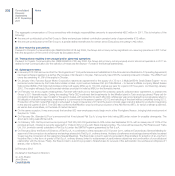 237
237 -
 238
238 -
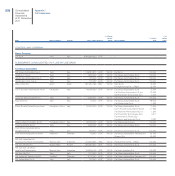 239
239 -
 240
240 -
 241
241 -
 242
242 -
 243
243 -
 244
244 -
 245
245 -
 246
246 -
 247
247 -
 248
248 -
 249
249 -
 250
250 -
 251
251 -
 252
252 -
 253
253 -
 254
254 -
 255
255 -
 256
256 -
 257
257 -
 258
258 -
 259
259 -
 260
260 -
 261
261 -
 262
262 -
 263
263 -
 264
264 -
 265
265 -
 266
266 -
 267
267 -
 268
268 -
 269
269 -
 270
270 -
 271
271 -
 272
272 -
 273
273 -
 274
274 -
 275
275 -
 276
276 -
 277
277 -
 278
278 -
 279
279 -
 280
280 -
 281
281 -
 282
282 -
 283
283 -
 284
284 -
 285
285 -
 286
286 -
 287
287 -
 288
288 -
 289
289 -
 290
290 -
 291
291 -
 292
292 -
 293
293 -
 294
294 -
 295
295 -
 296
296 -
 297
297 -
 298
298 -
 299
299 -
 300
300 -
 301
301 -
 302
302 -
 303
303 -
 304
304 -
 305
305 -
 306
306 -
 307
307 -
 308
308 -
 309
309 -
 310
310 -
 311
311 -
 312
312 -
 313
313 -
 314
314 -
 315
315 -
 316
316 -
 317
317 -
 318
318 -
 319
319 -
 320
320 -
 321
321 -
 322
322 -
 323
323 -
 324
324 -
 325
325 -
 326
326 -
 327
327 -
 328
328 -
 329
329 -
 330
330 -
 331
331 -
 332
332 -
 333
333 -
 334
334 -
 335
335 -
 336
336 -
 337
337 -
 338
338 -
 339
339 -
 340
340 -
 341
341 -
 342
342 -
 343
343 -
 344
344 -
 345
345 -
 346
346 -
 347
347 -
 348
348 -
 349
349 -
 350
350 -
 351
351 -
 352
352 -
 353
353 -
 354
354 -
 355
355 -
 356
356 -
 357
357 -
 358
358 -
 359
359 -
 360
360 -
 361
361 -
 362
362 -
 363
363 -
 364
364 -
 365
365 -
 366
366 -
 367
367 -
 368
368 -
 369
369 -
 370
370 -
 371
371 -
 372
372 -
 373
373 -
 374
374 -
 375
375 -
 376
376 -
 377
377 -
 378
378 -
 379
379 -
 380
380 -
 381
381 -
 382
382 -
 383
383 -
 384
384 -
 385
385 -
 386
386 -
 387
387 -
 388
388 -
 389
389 -
 390
390 -
 391
391 -
 392
392 -
 393
393 -
 394
394 -
 395
395 -
 396
396 -
 397
397 -
 398
398 -
 399
399 -
 400
400 -
 401
401 -
 402
402
 |
 |

Consolidated
Financial
Statements
at 31 December
2011
Notes
228
From an operating point of view the Group manages liquidity risk by monitoring cash flows and keeping an adequate level of funds at its disposal. The
operating cash flows, main funding operations and liquidity of the Fiat Group excluding Chrysler are centrally managed in the Group’s treasury companies
with the aim of ensuring effective and efficient management of the Group’s funds. These companies obtain funds on the financial markets by means which
may assume different technical forms.
Chrysler manages the cash generated by its operations and coverage of its funding requirements independently. In this respect Fiat has pledged no
guarantee, commitment or similar obligation in relation to any of Chrysler’s financing obligations, nor has it assumed any kind of obligation or commitment
to fund Chrysler in the future.
Details of the repayment structure of the Group’s financial assets and liabilities are provided in Note 19 - Current Receivables and Other current assets and
in Note 28 - Debt. Details of the repayment structure of derivative financial instruments are provided in Note 21.
The Group believes that the funds currently available to the treasuries of Fiat and Chrysler, in addition to those that will be generated from operating and
financing activities, will enable the Fiat Group to satisfy the requirements of its investing activities and working capital needs, fulfil its obligations to repay its
debt at the natural due dates and ensure an appropriate level of operating and strategic flexibility.
Finance market risks
As a multinational group that has operations throughout the world, the Group is exposed to market risks from fluctuations in foreign currency exchange and
interest rates, in addition, the Group is exposed to market risks in terms of the commodity prices associated with business operations. The Group is also
exposed to the risk of a change in the price of certain shares.
The Group exposure to currency risk arises both in connection with the geographical distribution of the Group’s industrial activities compared to the markets
in which it sells its products, and in relation to the use of external borrowing denominated in foreign currencies.
The Group exposure to interest rate risk arises from the need to fund industrial and financial operating activities and the necessity to deploy surplus funds.
Changes in market interest rates may have the effect of either increasing or decreasing the Group’s net profit/(loss), thereby indirectly affecting the costs
and returns of financing and investing transactions.
The Group’s exposure to commodity price risk arises from the risk of changes occurring in the price of certain raw materials used in production. Changes
in the price of raw materials could have a significant effect on the Group’s results by indirectly affecting costs and product margins.
The Group regularly assesses its exposure to finance market risk and manages those risks through the use of derivative financial instruments in accordance
with its established risk management policies.
The Group’s policy permits derivatives to be used only for managing the exposure to fluctuations in exchange and interest rates connected with future cash
flows and assets and liabilities, and not for speculative purposes.
The Group utilises derivative financial instruments designated as fair value hedges, mainly to hedge:
the currency risk on financial instruments denominated in foreign currency;
the interest rate risk on fixed rate loans and borrowings.
The instruments used for these hedges are mainly currency swaps, and interest rate swaps and combined interest rate and currency financial instruments.
The Group uses derivative financial instruments as cash flow hedges for the purpose of pre-determining:
the exchange rate at which forecasted transactions denominated in foreign currencies will be accounted for;
the interest paid on borrowings, both to match the fixed interest received on loans (customer financing activity), and to achieve a pre-defined mix of
floating versus fixed rate funding structured loans;
the price of certain commodities.
The exchange rate exposure on forecasted commercial flows is hedged by currency swaps, forward contracts and currency options. Interest rate exposures
are usually hedged by interest rate swaps and, in limited cases, by forward rate agreements. Exposure to changes in the price of commodities is generally
hedged by using commodity swaps.
